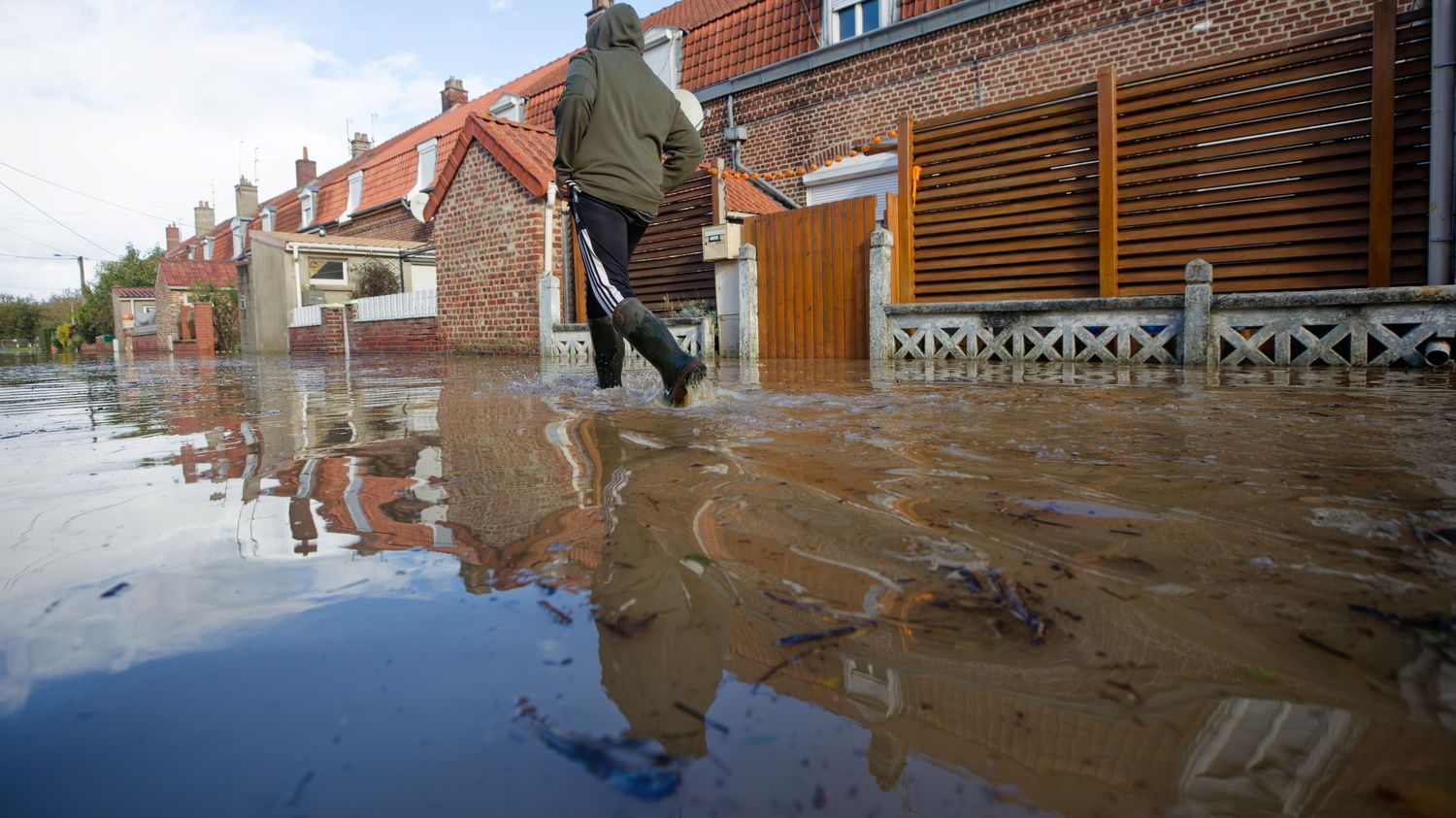Why not take advantage of floods to collect and conserve water in anticipation of dry periods? Alain Dupuy, professor of hydrogeology at the Bordeaux Polytechnic Institute, deciphers this hypothesis for franceinfo.
Since the beginning of November, heavy rains and storms have followed one another in Pas-de-Calais, causing significant flooding in the department. Since November 6, they have affected nearly 5,000 homes and forced the evacuation of 1,400 people, according to prefect Jacques Billant. In a context of global warming, is it possible to store these large volumes of water to reuse them during periods of drought? Questioned by franceinfo, Alain Dupuy, professor of hydrogeology at the Polytechnic Institute of Bordeaux (INPB), analyzes this hypothesis, while the decline is still expected in Pas-de-Calais.
Franceinfo: what is the situation with groundwater in Pas-de-Calais currently?
Alain Dupuy: the situation is not homogeneous across the entire territory. It depends on the local geology, that is to say the rock present in the subsoil and its physical properties, such as its porosity. In the region, precipitation generally contributed to the recharge of the water tables. Locally, as near Saint-Omer, in Blendecques, where the soil is mainly composed of chalk and clay, the water table is flush [pleine].
What is the immediate risk when an aquifer is full and the area concerned records heavy precipitation?
In this case, the water tables become a brake on the decline. They only return water through runoff and no longer absorb anything. As the subsoil no longer acts as a sponge, all the rain that arrives will become runoff and, potentially, flood.
Are there risks of overflow in the long term?
Some water tables are more responsive to environmental changes than others. Aquifers located deeper in less water-permeable terrain take longer to respond to precipitation.
“These aquifers can continue to fill over several weeks, even after the precipitation has stopped, and reach exceptionally high levels once the flood begins.”
Alain Dupuy, professor of hydrogeology at INPBat franceinfo
In these types of situations, new flooding may occur in areas different from those initially affected. Groundwater and waterways are closely interconnected, so when water tables are saturated they can discharge excess water into low-lying areas or waterways, increasing the risk of overflows.
As for shallow aquifers, when large quantities of water reach them, the water level can rise above the usual level. If the water cannot find a way to flow, it can rise to the surface. This can lead to basement flooding. This phenomenon is known as water table rise. [comme l’explique le site officiel Géorisques].
Is it possible to use flood water to encourage recession and recharge less filled aquifers?
Taking water from floods and floods is extremely complex. The rule in France is to recharge water of similar quality to that already present in the groundwater. In its recommendations, the National Agency for Food, Environmental and Occupational Health Safety (ANSES) authorizes the artificial recharge of groundwater under certain conditions only. (PDF link).
“In the case of floods, the water is turbid, that is to say it is cloudy and loaded with materials. There may also be health risks because it may have touched contaminated surfaces.”
Alain Dupuy, professor of hydrogeology at INPBat franceinfo
In addition to the health aspect, there is the physical aspect which complicates the approach: if we try to artificially bring flood water into the soil for artificial recharge of the water tables, this will have a clogging effect which will limit infiltration instead of encouraging it. Clogging occurs when fine particles like mud, clay, or organic sediments found in flood water accumulate in soil pores. This reduces the permeability of the soil.
However, using flood water remains possible. But this requires significant developments to be able to treat it before reinjecting it into the subsoil. The best way is to let time and gravity do their work. Indeed, when the water is loaded with materials, the sediments fall and the surface water becomes clearer. However, during floods, time is of the essence.
And what about open-air storage?
The problem is the same, we need to bring the water back to a higher quality level, regardless of its subsequent use. But storing water on the surface brings another problem: it requires considerable and non-habitable space. For example, upstream of the Seine, east of Paris, the reservoir lakes of Der-Chantecoq, Amance, du Temple, Pannecière and Orient protect the Paris Basin from floods and the risk of flooding downstream. Today, with the development of housing, agricultural crops and factories, establishing flood zones is becoming almost impossible. No one agrees to have one anymore, because it takes up too much space.
Artificial groundwater recharge experiments are being carried out in the Garonne valley where you work. What does this project consist of?
For two years, we have been trying to re-promote the entry of water into the water table to have more of it during the summers, but it is not flood water. Upstream of Toulouse and downstream of Agen, we try to capture water in winter in different canals. We are trying to re-infiltrate this water, which has traveled far enough to become clear water, into the aquifer to fill it more than what we currently have. We have already carried out infiltration tests in a ditch and in a well. But what is complicated is changing scale. This year, we will try to increase the surface areas used to be able to increase this proportion of artificial recharge water.
